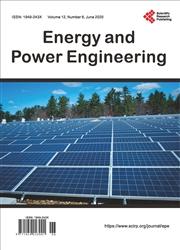A Protection Method of VSC-HVDC Cables Based on Generalized S-Transform
引用次数: 2
Abstract
Generalized S-transform is a time-frequency analysis method which has higher resolution than S-transform. It can precisely extract the time-amplitude characteristics of different frequency components in the signal. In this paper, a novel protection method for VSC-HVDC (Voltage source converter based high voltage DC) based on Generalized S-transform is proposed. Firstly, extracting frequency component of fault current by Generalized S-transform and using mutation point of high frequency to determine the fault time. Secondly, using the zero-frequency component of fault current to eliminate disturbances. Finally, the polarity of sudden change currents in the two terminals is employed to discriminate the internal and external faults. Simulations in PSCAD/EMTDC and MATLAB show that the proposed method can distinguish faults accurately and effectively.基于广义s变换的VSC-HVDC电缆保护方法
广义s变换是一种比s变换具有更高分辨率的时频分析方法。它可以精确地提取信号中不同频率分量的时幅特性。本文提出了一种基于广义s变换的vdc - hvdc保护方法。首先,利用广义s变换提取故障电流的频率分量,利用高频突变点确定故障时间;其次,利用故障电流的零频分量消除干扰。最后,利用两端突变电流的极性来判别内部故障和外部故障。在PSCAD/EMTDC和MATLAB中进行的仿真表明,该方法能准确有效地识别故障。
本文章由计算机程序翻译,如有差异,请以英文原文为准。
求助全文
约1分钟内获得全文
求助全文

 求助内容:
求助内容: 应助结果提醒方式:
应助结果提醒方式:


